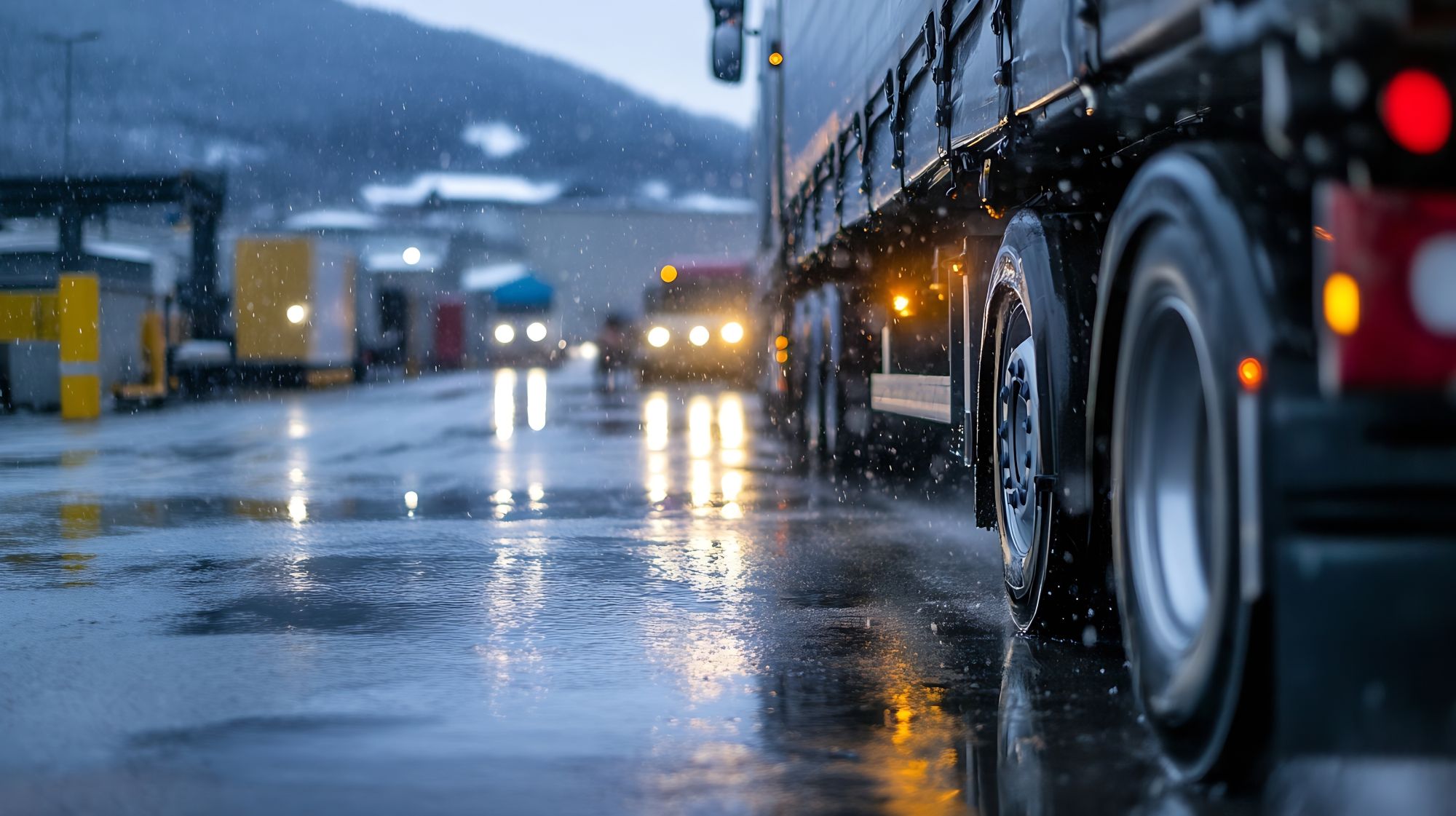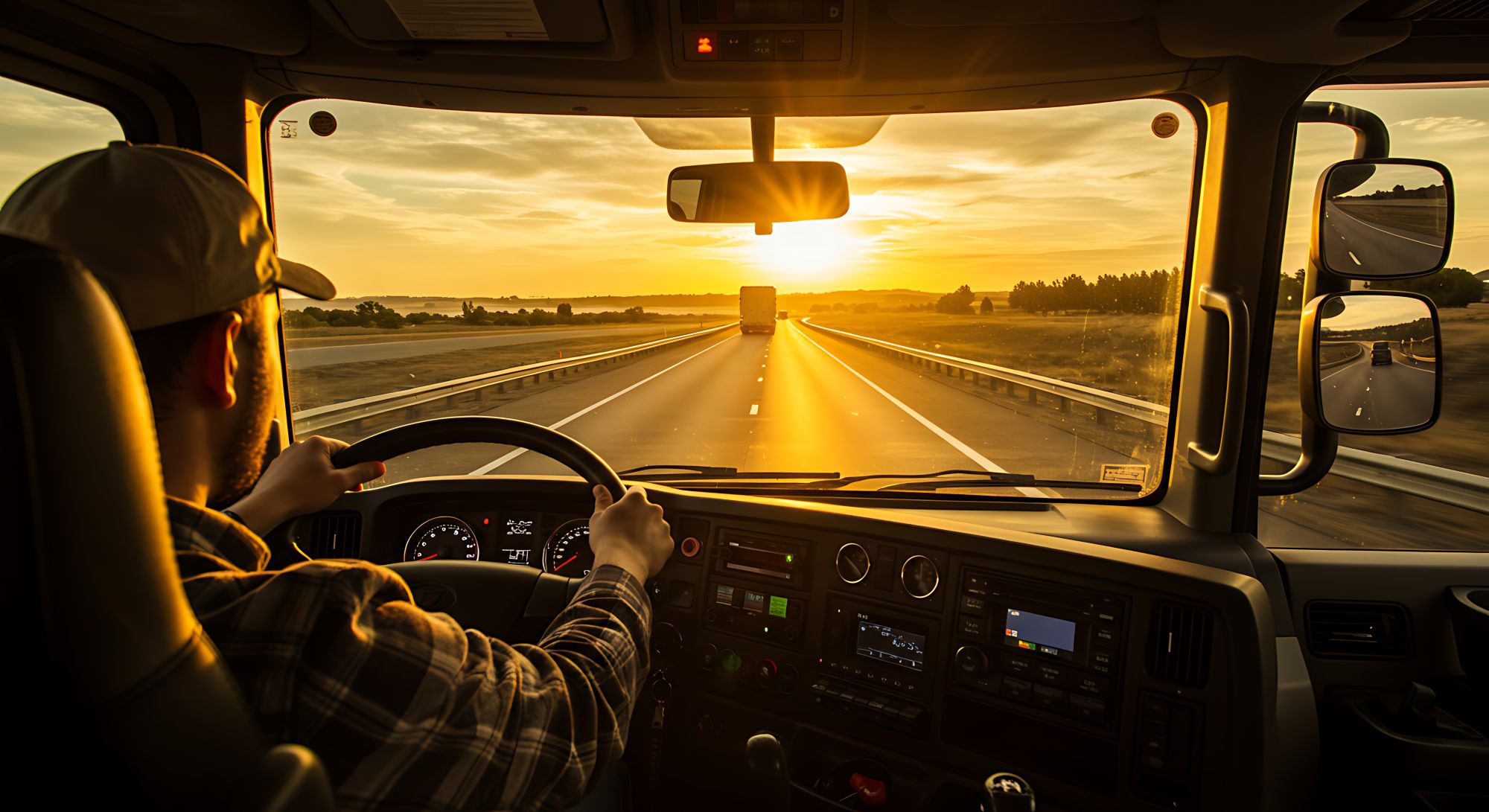
Guest
How climate change is impacting the mobility sector
Created: 21/07/2025
•
Updated: 21/07/2025
Climate change is no longer a distant risk. For those working in road transport, it’s a daily operational reality – one that’s becoming harder to ignore with every passing year. From heatwaves that melt tarmac to floods that cut off major routes, the impact of a shifting climate is baked into the business of moving goods.
For fleet managers, this means navigating evolving regulations, updating infrastructure and rethinking continuity planning. For drivers, it means adapting to new risks on the road – from tyre blowouts to disrupted delivery windows. And for the entire sector, it signals the need for a more resilient, climate-aware approach to mobility.
Weather disruption is an operational threat
In July 2022, the UK experienced its hottest day on record. As temperatures climbed to 40℃, roads began to soften, with sections of the A14 closed due to surface degradation. Fleet operators were forced to reroute deliveries, sometimes at short notice, while engine temperatures soared and vehicles struggled to maintain performance.
That same year, high winds from Storm Eunice caused widespread damage across freight corridors in Western Europe, overturning high-sided vehicles and damaging temperature-sensitive cargo. Meanwhile, in January 2024, Storm Henk flooded vast areas of central England. Key routes in the Midlands were impassable and some drivers were stranded for hours.
These are not isolated events. They are signs of a transport system increasingly vulnerable to climate threats. Road surfaces, vehicle components and logistics networks are all being tested by changing conditions – and the consequences are being felt throughout the supply chain.
Disrupted supply chains
When it comes to climate-related disruption, the impacts aren’t just felt on individual routes. Whole supply chains are being affected – sometimes with little warning. In The Netherlands, rising sea levels and heavier rainfall are prompting authorities and businesses to reassess the resilience of critical logistics infrastructure, particularly in low-lying industrial areas.
The Port of Rotterdam – Europe’s largest seaport – has taken active steps to adapt to climate risk, reinforcing quay walls, elevating access roads and upgrading stormwater systems to protect against flooding. Inland logistics centres are also under scrutiny, as extreme weather has exposed vulnerabilities in access routes and drainage.
Transport innovation
Fleet technology is improving fast, especially when it comes to electrification and smart diagnostics. But climate change is creating new stresses for even the most advanced vehicles. Battery efficiency can fall by up to 20% in cold weather, reducing the effective range of electric vans. Meanwhile, high temperatures accelerate tyre degradation and put additional strain on vehicle cooling systems.
To address these issues, some operators are investing in predictive maintenance systems that use telematics to anticipate wear and schedule repairs before costly failures occur. Others are upgrading cab comfort systems to protect driver wellbeing during periods of extreme heat or cold. While these changes involve upfront investment, they can pay dividends in uptime, safety and driver retention.
Rising climate risk is reshaping insurance, too. Some insurers are responding to the increased frequency of extreme weather claims by raising premiums and tightening exclusions. Business interruption policies, in particular, are under greater scrutiny, especially where supply chains are vulnerable to repeat disruption. And while cargo insurance remains a consideration, not all policies automatically cover delays caused by climate events such as flooding or high winds.
Fleet managers should review their cover in light of these emerging risks. That means checking for exclusions, assessing how climate-related events are defined, and ensuring that critical gaps – such as downtime due to road closures – are adequately addressed. In some cases, demonstrating a proactive approach to risk management, flood mitigation and driver training can also help secure more favourable terms.

The regulatory landscape
While the physical impacts of climate change are already visible, regulatory shifts are adding another layer of complexity for operators. Low-emission zones are expanding rapidly across the UK and Europe, placing new demands on fleet composition and compliance. In London, the Ultra Low Emission Zone (ULEZ) continues to grow, while cities like Birmingham and Oxford have introduced their own variations.
At the European level, the Green Deal and Fit for 55 package have set ambitious targets for decarbonisation. Fleet operators are being incentivised – and increasingly required – to switch to cleaner fuels and technologies. From electrification mandates to supply chain transparency rules, operators now face a new baseline for what’s considered acceptable business practice.
For those managing fleets, these changes present both a logistical challenge and a strategic opportunity. Embracing sustainability isn't just about avoiding penalties – it’s about futureproofing operations and staying ahead of changing customer expectations.
Building resilient operations
Adaptation doesn’t happen overnight, but incremental changes can have a meaningful impact. Some operators are now carrying out climate risk assessments across their fleet operations, identifying assets and routes most vulnerable to disruption. Others are offering drivers updated training to improve safety and decision-making during extreme weather events.
Fuel choices are shifting too. Hauliers looking for lower-carbon alternatives are turning to HVO – hydrotreated vegetable oil – an alternative to diesel that cuts emissions without requiring new infrastructure. Meanwhile, those investing in load optimisation software are seeing benefits not just in fuel economy but in emissions reductions that support compliance goals.
There’s no longer any doubt that climate change is shaping the future of road transport, not in decades, but right now. The challenge for operators is to shift from a reactive mindset to a more strategic, long-term mindset. That means understanding the risks, acting on them early, and recognising that resilience is fast becoming a source of competitive advantage.
“We’re hearing the same thing from fleet operators across the UK and Europe,” says Nick Renton, Head of European Strategy and Business Development at SNAP. “Climate disruption isn’t a future risk – it’s already here, affecting everything from warehousing and route planning to driver welfare. The fleets that thrive will be the ones that treat climate resilience as a business strategy, not just an emergency response.
“It matters because the cost of inaction is rising – not just financially, but in terms of missed deliveries, operational downtime and the wellbeing of drivers on the road. If we want to keep goods moving and businesses growing, we need to start building that resilience in now.”
At SNAP, we work closely with fleets across the UK and Europe to help them navigate this new reality. Whether it’s through insights, partnerships, or smarter tools for on-the-road operations, we’re here to support those who keep the wheels turning – whatever the weather. Sign up today to take advantage of our fleet management solutions.



